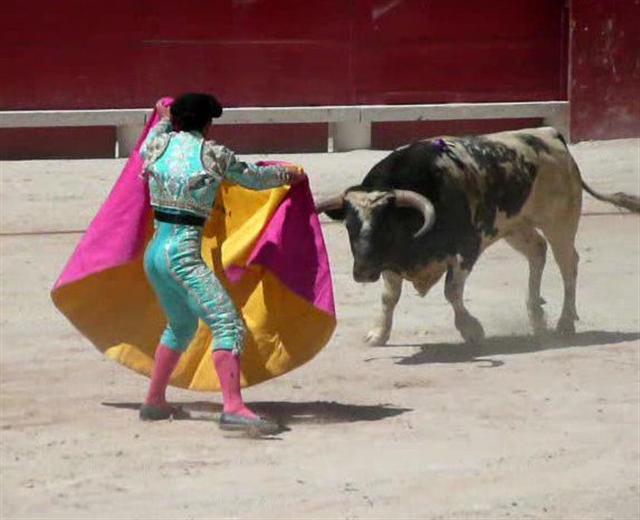|
4. Allen has one more, possibly useful, piece of information about Wasat: "In China it was Ta Tsun, the Great Wine-jar." My intention is not to compare the henua ora glyph type with a wine-jar (though there certainly is a resemblence with an amphora). Instead the Great Wine-jar reminded me of the Aquarius constellation. With 2 'years' in a year there could be amphoras also at the other end of the sky roof. Possibly Ta Tsun can throw some light on the strange upper right corner in the mythic picture from Chinese Turkestan (cfr at The Towel):  At the left in the picture - below the 8 'caps' - we can make out a rising path up to the top of a 'central tree'. There are 5 persons distributed in an oblique quincunx pattern. In the following gap there is someone holding a pice of cloth hiding whatever is behind. And to the right of the piece of cloth comes an apartment with a pair of jars. The outline of the Gemini constellation was drawn like a piece of cloth by Charlies Dien (Uranographia,1831):
"... The traditional constellation figures are not given at all; instead, major stars are joined to produce simple geometrical shapes, so that Gemini, for example, is a simple rectangle, while Taurus is a collection of triangles. Midway between Taurus and Gemini, just to the left of the seam, there is a note of historic interest, and in the detail you can almost read it: 'Pres de cette etoile fut decouverte la planete d'Uranus.' Exactly fifty years after William Herschel discovered Uranus, the spot where the planet was first seen is still being commemorated." (Linda Hall's internet site.) The ecliptic is the path which the planets follow. Uranus was discovered by Herschel close to the 6th hour:
The precession slowly moves 6h towards the right in the map above. Today midsummer (6h past spring equinox) arrives close to Betelgeuze in Orion. We should consider the possibility that δ Gemini once was at 0h, in the middle between the winter 'year' and the summer 'year'. The 'cloth' of Gemini would at that time have covered the gap between winter and summer. It would have been at least 6 / 24 * 365¼ * 72 = 6575 years ago, around 4,575 B.C. Later the idea of a cloth covering spring equinox could have been reused several times, first at Orion where a rectangular outline certainly was clearly seen. The Golden Fleece could have been a later application when Aries was at 0h. Maybe, even, we can see the traditionally red cloth of bull-fighting as a 'proof' of my idea:
In the picture from Chinese Turkestan, however, it seems more plausible that the cloth hides the gap at midsummer. Such a gap - remaining like a crack in the sky roof constellation instead of being pushed away by spring equinox - probably accounts for the Mayan view of the Orion Turtle (cfr at Parehe):
... In the Popol Vuh, First Father was killed in Xibalba, the Maya Otherworld, by the Lords of Death. They then buried his body in a ballcourt. His twin sons went to Xibalba, defeated his killers, and brought him back to life. Classic-period artists depicted First Father being reborn through the cracked carapace of a turtle shell, often flanked by his two sons ... The son at left (I have reversed the picture) holds what looks like a jar. Perhaps this pair of sons is a reuse of the idea of twins from the original Gemini, where the one with a jar could represent the watery winter 'year' and the one at right (with jaguar spots) could represent the summer 'year'. The Pegasus Square, now rising heliacally just before spring equinox (north of the equator) would once upon a time have been at winter solstice and possibly then have been thought of as a cover for the crack between the old year ('Father') and the new. But the 'years' (the 'Sons') were not equally long, it seems, one was twice as long as the other. Therefore the Pegasus Square (at present ending close to 0h) could have been succeeded by a later cloth at Gemini (at present at 8h). 8 / 24 * 365¼ = 121¾ and 16 / 24 * 365¼ = 243½. Gemini at spring equinox would initiate ⅔ of the year in the light from Sun, while the Pegaus Square could have indicated half as long a 'year' with Sun 'absent'. |



